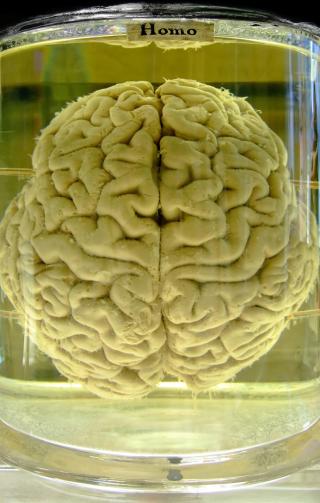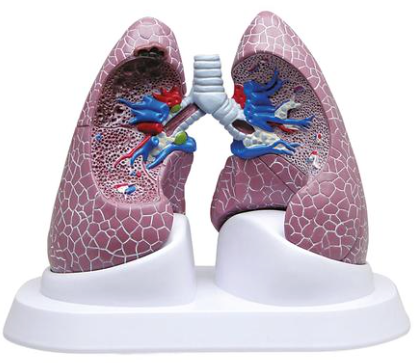
Formaldehyde as a Carcinogen – How Do We Protect Medical Students?
Formaldehyde has long been used as an effective preservative on cadavers, either by undertakers as part of the embalming process, or by hospitals or universities which need to preserve whole bodies or organs for lengthy periods of time, as the chemicals delay the natural process of decay.
As well as being used for preserving organisms, formaldehyde can also be found in household plastics and foam and in upholstery and carpets.
However, since the 1980s research has been ongoing into the health effects of prolonged exposure to formaldehyde and the results are quite alarming!
Formaldehyde and the Cancer Link
At the beginning of the 1980s, scientists were conducting studies to see whether exposure to formaldehyde caused cancer. During this time the link was made between formaldehyde and nose cancer in rats. Since then, several more large studies have been carried out to see whether formaldehyde has the same effect on humans and to determine what level of exposure is needed to cause cancer. The National Cancer Institute (NCI) in the United States has found contradictory results on various studies. Some seem to show increased levels of lung cancer or leukaemia among textile workers who were routinely exposed to formaldehyde, and other studies indicating no such link. However, the weight of the studies meant that on the balance of probability, in 2006 the International Agency for Research on Cancer declared formaldehyde was a carcinogen.
Limiting Exposure to Formaldehyde
 The research scientists were quick to point out that having a new carpet fitted at home or sitting on a sofa which contains formaldehyde is very unlikely to pose any risk at all. If your job is as a carpet fitter or working in the sofa factory, then prolonged exposure over a period of years could certainly raise your risk of developing certain types of cancer. Limits were quickly placed on the maximum exposure levels for formaldehyde and employers in most countries are now told that they have to supply protective clothing and respirators for workers in environments where formaldehyde levels are high.
The research scientists were quick to point out that having a new carpet fitted at home or sitting on a sofa which contains formaldehyde is very unlikely to pose any risk at all. If your job is as a carpet fitter or working in the sofa factory, then prolonged exposure over a period of years could certainly raise your risk of developing certain types of cancer. Limits were quickly placed on the maximum exposure levels for formaldehyde and employers in most countries are now told that they have to supply protective clothing and respirators for workers in environments where formaldehyde levels are high.
Implications for Medical Students
Every day, thousands of medical students across the world are working with dead bodies which are preserved in formaldehyde. The knowledge that formaldehyde is a carcinogen has led to the introduction of many different Health and Safety laws regarding how staff should preserve and handle human remains. Laboratories have to ensure that the concentrations of formaldehyde are kept at levels below two parts per million, and to make sure that any area where preserving or dissection takes place is constantly ventilated with extractor fans. These regulations have had significant cost implications for Universities, hospitals and mortuaries, all of which have had to rewrite their policies, and in some cases, install costly new ventilation systems in order to comply with the latest legislation. As research continues to try to investigate further the links between different levels of formaldehyde exposure and respiratory cancers, there is every possibility that regulations will be revised in the future and medical schools will be landed with even more costs to upgrade ventilation or laboratory facilities.
Alternatives to Cadavers for Medical Training
 The growing awareness of the potential health implications for students in using cadavers preserved in formaldehyde to teach anatomy has led many universities to look at alternatives. In many cases, this means exploring what technology can offer the anatomy learner. Products such as the Sectra Table offer learners a 3D, interactive experience which is just as valuable as learning using a dead body, but with none of the risks associated with prolonged formaldehyde exposure. Tables can be programmed to allow students to experience a wide range of different anatomical features in as realistic as environment as possible, and students can even “cut” through layers of tissue or muscle using virtual scalpels. Universities are also swiftly realising that the cost of acquiring the latest technology is on a par with remodelling laboratories to meet the new standards of ventilation, and of course using an interactive table carries no potential health risks for the students either.
The growing awareness of the potential health implications for students in using cadavers preserved in formaldehyde to teach anatomy has led many universities to look at alternatives. In many cases, this means exploring what technology can offer the anatomy learner. Products such as the Sectra Table offer learners a 3D, interactive experience which is just as valuable as learning using a dead body, but with none of the risks associated with prolonged formaldehyde exposure. Tables can be programmed to allow students to experience a wide range of different anatomical features in as realistic as environment as possible, and students can even “cut” through layers of tissue or muscle using virtual scalpels. Universities are also swiftly realising that the cost of acquiring the latest technology is on a par with remodelling laboratories to meet the new standards of ventilation, and of course using an interactive table carries no potential health risks for the students either.
Sources:
https://en.wikipedia.org/wiki/Formaldehyde
http://www.cancer.org/cancer/cancercauses/othercarcinogens/intheworkplace/formaldehyde
https://www.hta.gov.uk/sites/default/files/Code_of_practice_7_-_Public_display.pdf